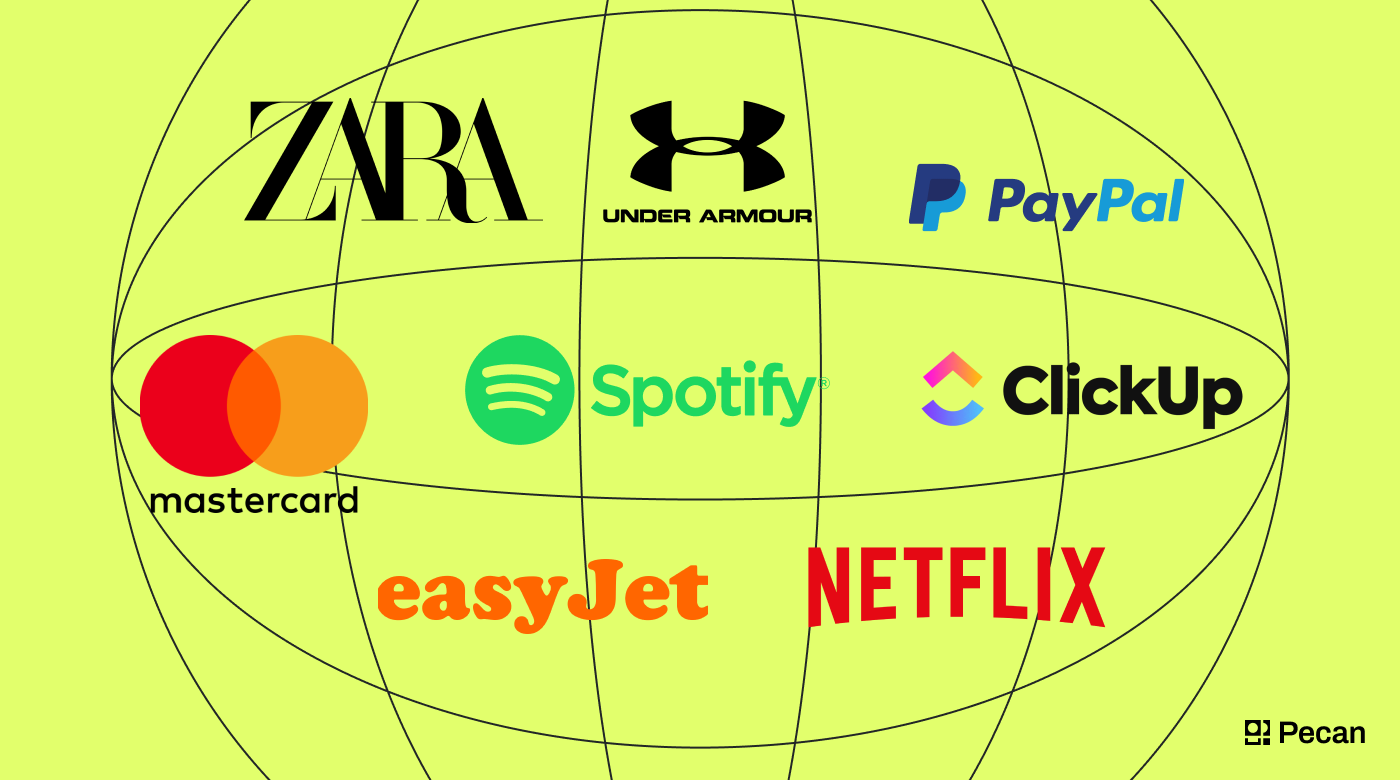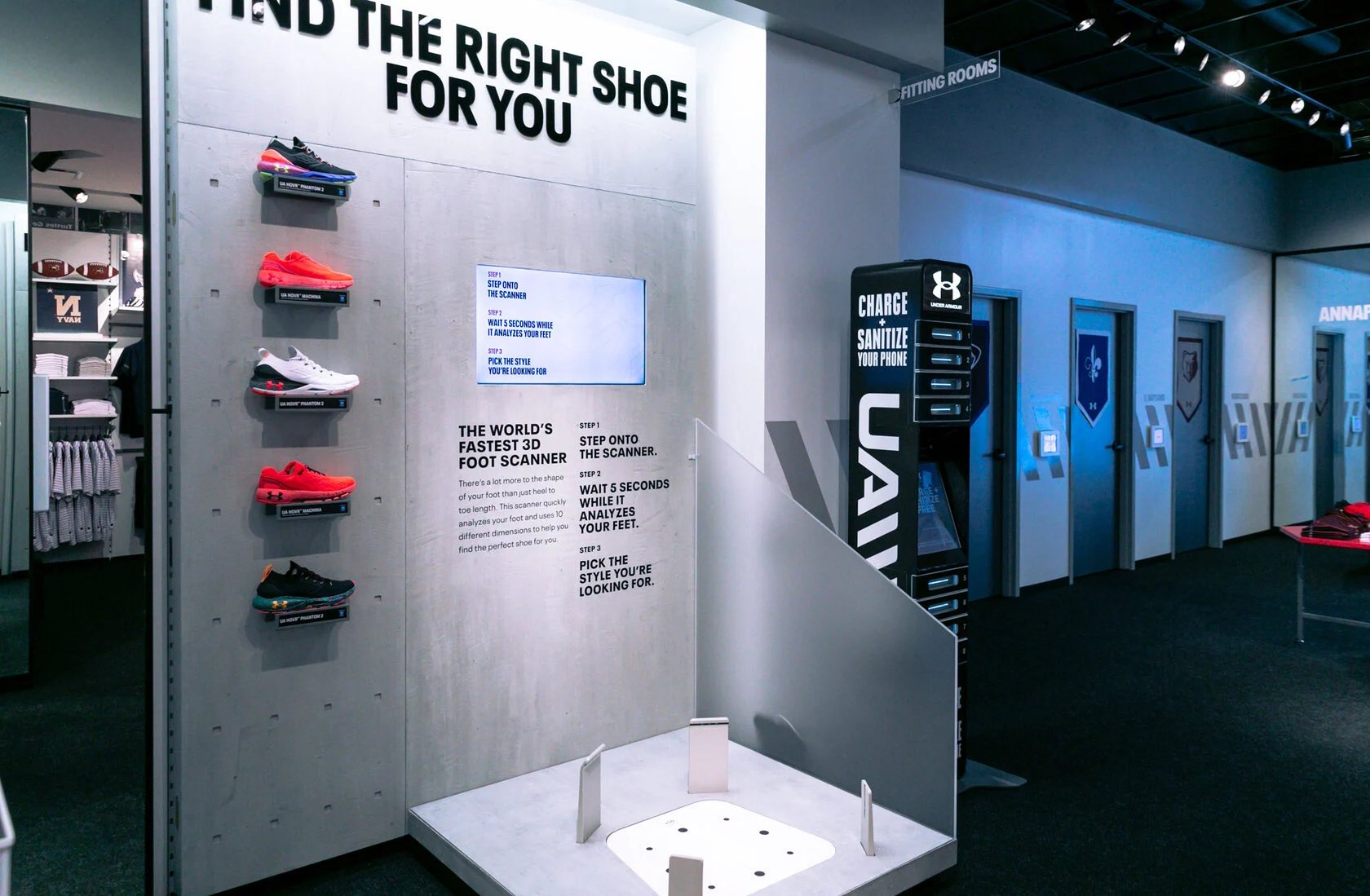If you have yet to explore AI for your marketing efforts, you’re operating with the same playbook used two decades ago. You’re not just playing by the rules of a world that no longer exists — you're also in the minority. Over 60% of marketers have already used AI to automate various areas of the job, going further than just generating images or copy.
This article will dive into how some of the world’s biggest companies use AI for marketing so you can explore how to do the same.
8 companies using AI for marketing
Some of the companies we’ve found to be using AI for marketing in innovative ways include:
1. Mastercard
Conversations on social media can be difficult to predict, and they often end just as quickly as they start.
It might be too late when a marketing department figures out how to enter a discussion, let alone create the content they will use. This might be why a recent study of 2,100 companies reported declining organic engagement rates.
Mastercard’s answer to this is its proprietary Digital Engine, which Chief Marketing Communications Officer and President of Healthcare Raja Rajamannar discussed in an interview.
It analyzes billions of conversations across the internet in real time and identifies emerging micro-trends. It cross-references them with Mastercard’s areas of interest, like travel and entertainment, so it only targets relevant trends.
Upon identifying a good fit before it peaks, it notifies the marketing team, and they decide whether to engage. If they opt to engage, they can pull from their library of standby content and enter the conversation strategically with relevant social media posts and targeted ads.
Mastercard initially tested the Digital Engine in Singapore before rolling it out to the rest of Asia and, eventually, globally. Today, the technology is at the heart of hundreds of active campaigns at any time.
In a blog post covering the technology, Rajamannar provided three case studies on how it performed in real-world scenarios.
Mastercard worked with a national airline on a campaign promoting a local tourist destination in one of them. The campaign resulted in click-through and engagement rates going up by 37% and 43%, respectively, while cost per click and cost per engagement went down by 29% and 32%, respectively.
2. Under Armour
Sportswear brand Under Armour operates several brick-and-mortar stores across the globe, and it's found a unique way to use AI at these physical locations.
Through a partnership with FitTech, a “retail fit technology” company, customers at Under Armour stores can scan their feet and receive personalized footwear recommendations.
(Image Source)
There are also stations at certain stores where customers can pick up items, and a screen will provide a detailed comparison with enough information for them to make informed purchase decisions.
That’s not all.
In August 2023, the company sought the talents of Netflix’s Top Boy actor Ashley Walters for an ad to revive its iconic 20-year-old “Protect This House” campaign.
In the ad “The Ultimate Team Talk,” Walters reads a script generated by ChatGPT.
3. Spotify
Spotify’s use of AI is well-known, primarily through its AI DJ feature. However, that’s not the only area where the company uses machine learning. In a recent interview, Spotify’s director of data science and insights, Ruchika Singh, discussed how the company uses predictive algorithms to map customer journeys.
From the moment a user interacts with Spotify, these models kick in in the background to figure out what they’d like and when. According to Singh, Spotify’s data scientists constantly refine the models in response to changing business needs to remain competitive.
Focusing on establishing and maintaining a positive customer experience (CX) from the first point of contact onward makes it easier for the company to convert users into paying customers.
This approach to CX is one factor that has catapulted it to the top of the streaming market, with 226 million users paying for Spotify Premium.
4. easyJet
Europe-based airline group easyJet serves approximately 90 million travelers every year. The company has turned to conversational AI technologies to maintain a positive digital experience and keep queries from falling through the cracks.
easyJet built a cloud-based conversation interface its customers could interact with through speech in the same way as popular voice assistants. The feature, Speak Now, is integrated into the company’s mobile app, parsing voice searches and delivering information to users.
Over time, the company has refined these interfaces' natural language processing (NLP) capabilities to improve the digital experience. Recently, it launched a chatbot with a 99.8% accuracy rate on 5 million queries.
5. Netflix
When Netflix first got into original programming, CEO Ted Sarandos was very open about the company building models from users’ data to drive content production decisions.
It’s been nearly a decade since mega-hits like House of Cards and Orange is the New Black, and Netflix still uses the same content production approach.
Because Netflix makes nearly 100% of its revenue from subscriptions, producing exclusive titles that get more people to sign up might be the company’s best marketing tactic.
(Image Source)
Four company data team members laid out how the models work in an in-depth blog post.
Simply put, they operate on transfer learning, where they analyze properties of past projects (called “source tasks”) to flesh out a similar future project (called a “target task”).
The attributes of the source tasks that get analyzed include length, genre, and plot summaries. The models assign a score to determine if the target task gets greenlit and how much promotion they’ll receive.
6. Zara
Spanish fast-fashion retailer Zara partners with technology firms to bring AI to many of its operations, from the supply chain to its customer experience.
One of its partners, Jetlore, provides predictive retail services that could personalize customer experiences. It analyzes data points around their clothing preferences to target users more effectively, including style, color, size, and fit.
Around the time the company partnered with Jetlore, it also began working with Spanish big data firm El Arte de Medir. Big data analytics made predicting customer behavior and making business decisions easier.
German startup Fit Analytics provided the retailer with a “size recommendation engine” that suggested better-fitting clothing to customers when shopping online. Leveraging this service would result in fewer returns and a more positive customer experience.
7. PayPal
PayPal used to run checks at regular intervals to see which users were active during a certain period, and any inactive accounts were marked as churned.
The problem with this approach is customers who became active soon after the checks ran were less likely to be won back by the time they were identified by the next one.
To address this, the company developed a predictive model that performed ongoing exploratory data analysis (EDA) instead of conducting the analyses at fixed dates.
The model analyzed historical churn data alongside key data points to determine users’ likelihood of churn early on. With this information, marketing teams could act much faster and with more targeted, personalized content.
As a result, PayPal successfully reduced churn and cut down the time needed to analyze a subset of users from around 6 hours to just 30 minutes.
8. ClickUp
In 2021, the content marketing team at project management software company ClickUp needed to optimize over 500 articles for SEO and produce more content for its blog.
To make this massive undertaking more manageable, the team turned to SurferSEO’s content editor for its “content intelligence” features.
Content intelligence brings different things to the table for different people. For writers, they find the topics most relevant to their target audience and can develop a solid content calendar. For SEOs, it analyzes the top SERPs, so they know what to target for favorable rankings. For chief marketing officers and other business executives, it’s a form of marketing automation that improves workflows and makes success more attainable.
With the content editor handling content planning, keyword research, SERP analysis, structuring, and drafting, ClickUp’s team successfully optimized over 130 articles and published over 150 more, boosting organic traffic by 85%.
How can Pecan AI help your marketing team?
Pecan leverages predictive analytics to take the guesswork out of marketing, so you’re always acting on data-driven insights.
Our platform provides you with a comprehensive suite of marketing optimization features, including:
- Marketing mix modeling (MMM): This is a process where marketing teams measure the outcomes of their spending in various channels. With predictive analytics, they can simulate different resource allocation models and more confidently determine which one would yield a greater impact.
- Customer winback: Pecan’s predictive models can identify when a customer is about to become inactive and suggest proactive measures to prevent churn. If they’re inactive, the platform uses data-driven insights to win them back, e.g., through retargeting ads.
- Customer engagement management: Keep your customers active through targeted customer success and loyalty programs. With upsell and cross-sell campaigns powered by predictive analytics, your customers remain engaged and more likely to convert when the time is right.
- Demand forecasting: Pecan can predict demand, so you don’t overproduce or overstock but maintain an inventory that keeps your customers satisfied and coming back.
These benefits aren’t just theoretical.
A giant US company with a media budget of over $1 billion turned to Pecan to optimize its marketing amid an economic slump. Our MMM model pored through the company’s historical marketing data and simulated different budgeting allocations.
At the end of the analysis, the model predicted what things would look like for the company a year in advance and identified a path to $100 million in annual savings with additional marketing optimization.
We’ve helped several companies grow with marketing optimization and predictive analytics. ArmorVPN and Hydrant have scaled to new heights with Pecan — and your company could be next.
Pecan also supports integrations that your marketing team will find useful. These include Salesforce for your CRM needs, CSV files for loading in large datasets, and Firebase to pool usage data from your back end for analytics.
The advantages of using Pecan for marketing optimization include its being scalable and ideal for big data analytics, cost-effective as an all-in-one solution, and easy to use.
The only downside is that it’s still new, so your average data-conscious team might not be as familiar with it as Tableau or Power BI, but that’s nothing a few days with a demo can’t fix.
Companies using AI for marketing FAQ
Which companies use AI for marketing?
Companies of all sizes use AI for marketing. We’ve discussed eight major global brands, but small companies aren’t lagging.
For instance, flower delivery company Euroflorist used AI to optimize product pages for A/B tests over 11 weeks. At the end of this exercise, the best test had a 4.3% increase in conversion rates.
The American Marketing Association (AMA) uses AI to learn readers’ preferences and tailor daily newsletters. The newsletter achieved a 42% engagement rate among its subscribers since they receive more relevant content.
What is an example of AI in marketing?
There are several examples of brands using AI in marketing to create graphics for campaigns, identify relevant market trends, and create variants for A/B tests.
Aside from the uses discussed already, one unique example of AI in marketing involves training a model that predicts the likelihood of a successful upsell. Pecan built one such model for a retailer. In just two weeks, it analyzed more than 100,000 leads daily, boosting conversion rates by 71%.
How does Coca-Cola use AI?
Coca-Cola used AI to create a limited-edition flavor intended to “show us an optimistic vision of what’s to come” based on what the year 3000 could be.
A few months earlier, the company had launched a platform where digital artists could use gen AI to create content pulled from its historical advertising assets.
How is Sephora using AI?
Sephora uses AI to generate landing pages with real-time product descriptions based on detailed product searches.
The landing pages use the search query in their URLs, and they’re only accessible by navigating from the search engine — you can’t get to them by navigating through Sephora’s website.
As a result, these landing pages have become a major traffic driver, accounting for 25% of Sephora’s organic search results.
Does Google use AI for marketing?
Google uses AI for marketing and actually provides AI-powered marketing tools that run on Google Cloud. The tools come with features for marketing analytics, automated bidding, chatbots, and more.
Is digital marketing at risk of being taken over by AI?
Digital marketing is likely not at risk of being taken over by AI. Instead, it will become one of the most useful tools in good digital marketers’ utility belts.
It’s already in use for a lot of marketing automation efforts, including paid advertising (32%), personalizing promotional messages (32%) and recommending products (22%).
Unlock the power of marketing automation
Big brands are leading the charge in using AI for marketing, but companies of all sizes can reap the benefits. Whether you’re part of a multinational corporation or run a local brick-and-mortar store, you can integrate AI to streamline marketing efforts, from analytics to customer experience management.
Some tangible ways you can do this include using it to generate graphics and copy as marketing content, creating variants for A/B tests, and extracting actionable insights from relevant market data.
If you’re ready to supercharge your marketing efforts with a robust AI strategy, contact us for a demo today.








